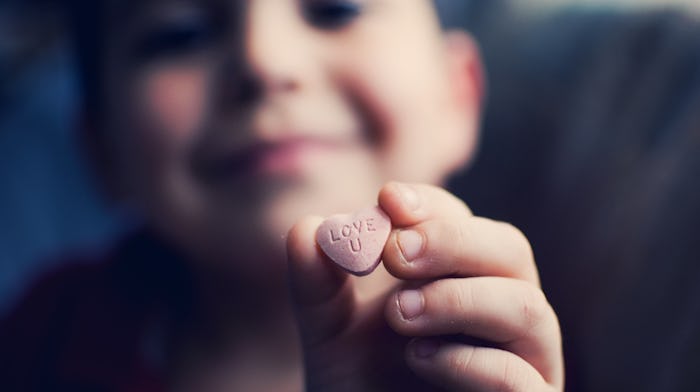Life

We Teach Kids Positive Connection Every Valentine's Day — Why Not In Sex Ed?
In classrooms around the country, young students are sharing Valentine’s Day cards with their classmates and friends to mark relationships and connections and show care for one another.
However, this light-hearted rite of passage — often filled with humor and candy — may mark the last time personal relationships get much classroom attention. Just about the time paper hearts and chocolate kisses are getting replaced with lectures about how puberty leads to body odor and periods, the focus on relationships get pushed aside.
Too often, sex education teaches young people about their changing bodies, but not about much else. In a new article in this February’s American Journal of Public Health special issue on pleasure, we call for an expansion of sex education to place greater emphasis on pleasure and relationships.
The content of most sex education is too narrow and doesn’t include enough of the communication and healthy relationships skills that young people need. When we stop to listen to young people, they tell us they are frustrated with the lack of information about positive aspects of sexuality and the inadequate preparation for real relationships that they receive.
Abstinence-only programs, currently being pushed by social conservatives at all levels of government, are a particularly harmful example of how sex and pleasure are being systematically stigmatized. And not too worry, research shows overwhelmingly that offering young people information about sex does not lead them to have more sex or engage in riskier behaviors.
In way too many cases, sex education is all about avoiding risk and a recitation of a long list of “don’ts” — don’t get pregnant, don’t get an STD, and don’t have sex, at least not until you are married. This narrow focus on the don'ts has consequences. Many schools don’t teach about condoms. Those that do rarely address concerns about reduced sexual pleasure, which is a key reason people don’t use condoms.
Our kids would be a lot better off if we talked about the fact that sex is supposed to feel good, physically and emotionally, and for both partners.
Focusing on the message to say no to sex ignores the important point that people can choose to say yes as well. While the #MeToo movement has shifted conversations to emphasize sexual consent, sex education still has a lot of catching up to do. We know that good sex education can make—and in some places already is making—an important difference in consent understanding and skills.
Pleasure shouldn’t be a taboo topic in young people’s sex education. Bringing pleasure into sex education doesn’t mean providing detailed how-to lectures. But our kids would be a lot better off if we talked about the fact that sex is supposed to feel good, physically and emotionally, and for both partners.
All of our kids deserve to learn this basic truth about sex. For too long, boys and men have gotten the message that the primary purpose of sex was their own pleasure. But pleasure is for everyone, including girls and women, and sex ed should acknowledge that! Indeed, sex ed should meet the needs of young people of all sexual and gender identities.
It’s time to shift our sex education approach from a scary list of don’ts and incorporate the “do’s.” The focus on safer sex has set too-low a bar for what sex education can offer. Focusing on the don’ts overlooks many key aspects of young people’s current and future sexual lives including the ability to form and maintain healthy relationships, the right to decide whether, when and with whom to engage in sexual behavior, and the fact that sex should be pleasurable.
Young people need more than the simple messages in Valentine’s Day cards. They need high quality sex education that teaches about pleasure and the information and skills to form healthy relationships. This Valentine’s Day, our heart-felt wish is to do better for today’s youth.
Laura D. Lindberg is a principal research scientist with the Guttmacher Institute. Leslie Kantor is Professor and Chair, Department of Urban-Global Public Health at Rutgers University’s School of Public Health.
Research cited:
Kantor, L., Lindberg, L. (2020) Pleasure and Sex Education: The Need for Broadening Both Content and Measurement. American Journal of Public Health, https://ajph.aphapublications.org/doi/10.2105/AJPH.2019.305320
Madhivanan, P. et al., (2016) Human papillomavirus vaccination and sexual disinhibition in females: a systematic review, American Journal of Preventive Medicine, https://www.ajpmonline.org/article/S0749-3797(16)30072-1/fulltext
Ogilvie, G. et al. (2018) Population-level sexual behaviours in adolescent girls before and after introduction of the human papillomavirus vaccine (2003–2013), Canadian Medical Association Journal, http://www.cmaj.ca/content/190/41/E1221
Breuner, C., Mattson, G. (2016) Sexuality Education for Children and Adolescents — Clinical Report for the American Academy of Pediatrics, Pediatrics, https://pediatrics.aappublications.org/content/pediatrics/138/2/e20161348.full.pdf
This article was originally published on